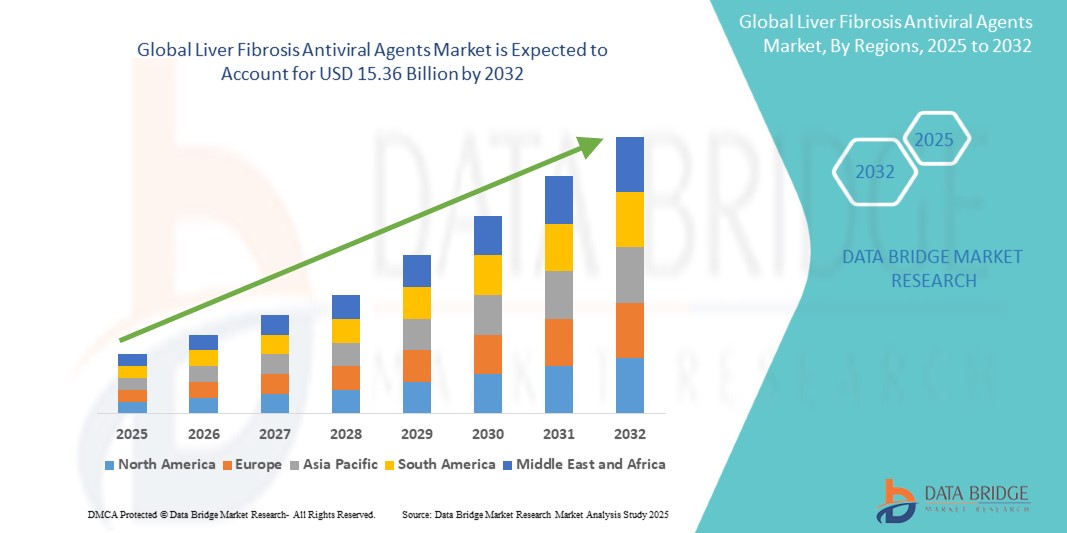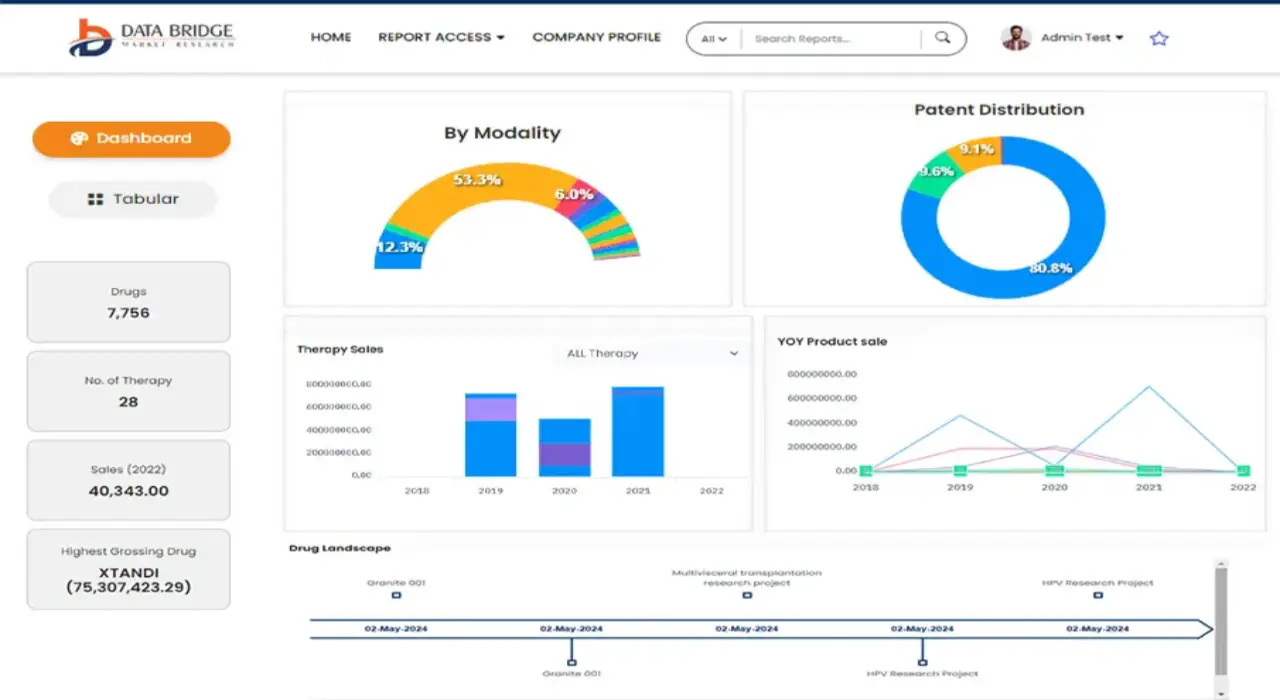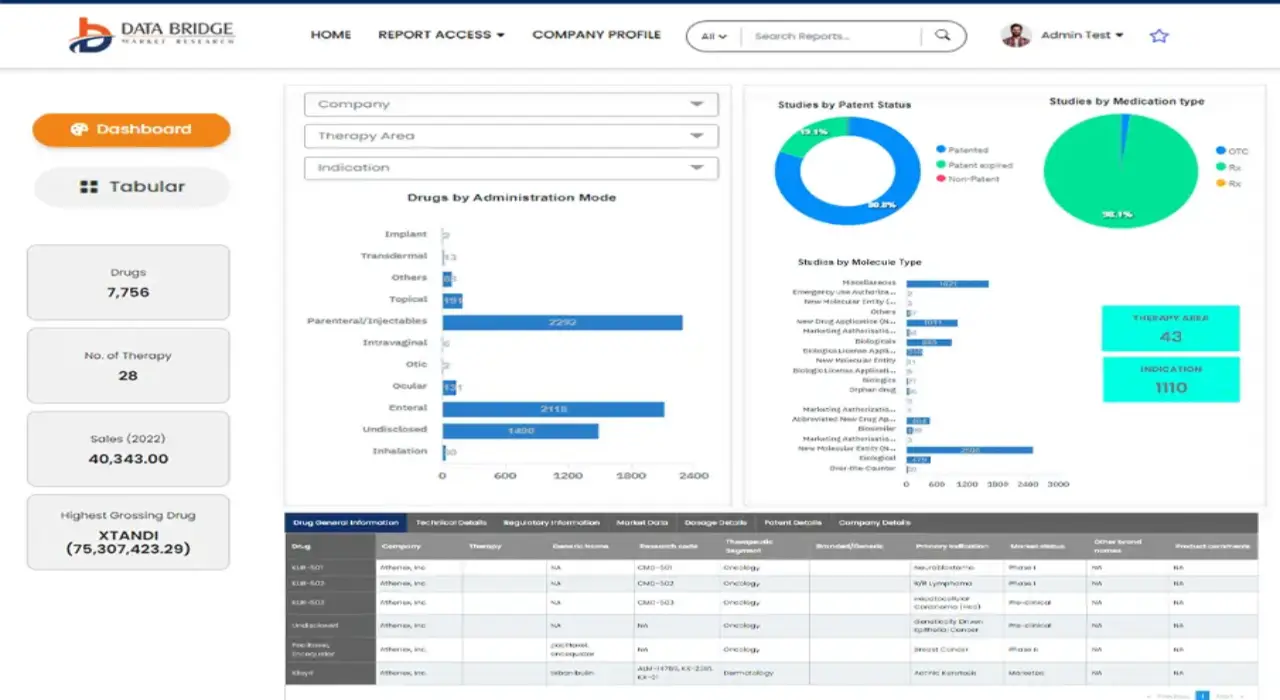Global Liver Fibrosis Antiviral Agents Market
Market Size in USD Billion
CAGR :
% 
 USD
6.57 Billion
USD
15.36 Billion
2024
2032
USD
6.57 Billion
USD
15.36 Billion
2024
2032
| 2025 –2032 | |
| USD 6.57 Billion | |
| USD 15.36 Billion | |
|
|
|
|
Global Liver Fibrosis Antiviral Agents Market Segmentation, By Type of Antiviral Agents (Pegylated Interferon, Nucleotide Analogues, Nucleoside Reverse Transcriptase Inhibitors, Protease Inhibitors, Combination Therapies and Others), Condition (Chronic Liver Diseases, Hepatitis C, and Nonalcoholic Steatohepatitis), End Users (Hospitals, Specialty Clinics, and Others), Distribution Channel (Hospital Pharmacies, Retail Pharmacies, and Online Pharmacies) - Industry Trends and Forecast to 2032
Liver Fibrosis Antiviral Agents Market Size
- The global liver fibrosis antiviral agents market was valued at USD 6.57 billion in 2024 and is expected to reach USD 15.36 billion by 2032
- During the forecast period of 2025 to 2032 the market is likely to grow at a CAGR of 11.20%, primarily driven by the rising hepatitis prevalence and treatments
- This growth is driven by factors such as rising prevalence of chronic liver diseases and advancements in antiviral drug development
Liver Fibrosis Antiviral Agents Market Analysis
- Liver fibrosis antiviral agents are medications designed to prevent or slow the progression of liver fibrosis caused by chronic viral infections such as hepatitis B and C. These agents work by targeting the underlying viral cause, reducing liver inflammation, and preventing further scarring of the liver tissue. Liver fibrosis occurs when excessive scar tissue builds up in the liver due to continuous liver damage, which, if untreated, can progress to cirrhosis or liver failure
- This growth is primarily fueled by the rising global prevalence of hepatitis infections, particularly in developing regions, alongside increasing public awareness and improved access to advanced healthcare services. In addition, favorable government initiatives promoting early diagnosis and treatment of liver diseases are further accelerating market expansion.
- Pharmaceutical advancements have led to the development of more effective liver fibrosis antiviral agents, including combination therapies that offer higher cure rates and fewer side effects
- North America currently dominates the market due to its well-established healthcare infrastructure
Report Scope and Liver Fibrosis Antiviral Agents Market Segmentation
|
Attributes |
Liver Fibrosis Antiviral Agents Key Market Insights |
|
Segments Covered |
|
|
Countries Covered |
North America
Europe
Asia-Pacific
Middle East and Africa
South America
|
|
Key Market Players |
|
|
Market Opportunities |
|
|
Value Added Data Infosets |
In addition to the insights on market scenarios such as market value, growth rate, segmentation, geographical coverage, and major players, the market reports curated by the Data Bridge Market Research also include depth expert analysis, patient epidemiology, pipeline analysis, pricing analysis, and regulatory framework. |
Liver Fibrosis Antiviral Agents Market Trends
“Increasing Shift Toward Combination Therapies”
- One prominent trend in the liver fibrosis antiviral agents market is the increasing shift toward combination therapies. These therapies combine multiple antiviral drugs to target different stages of the viral lifecycle, enhancing treatment efficacy and reducing the risk of drug resistance
- As hepatitis B and C remain the leading causes of liver fibrosis globally, combination regimens are becoming the preferred choice among healthcare providers. The effectiveness of liver fibrosis antiviral agents is significantly improved when used in combination, offering patients faster recovery times and better management of chronic liver conditions
- For instance, the combination of tenofovir and entecavir has shown promising results in suppressing hepatitis B virus replication, thereby slowing the progression of liver fibrosis. Pharmaceutical companies are actively investing in research and development to create innovative combination therapies with fewer side effects and shorter treatment durations
- This trend is further supported by regulatory approvals and ongoing clinical trials, reshaping the treatment landscape
Liver Fibrosis Antiviral Agents Market Dynamics
Driver
“Rising Prevalence of Chronic Liver Diseases”
- The rising prevalence of chronic liver diseases, particularly hepatitis B and hepatitis C infections, is significantly contributing to the increased demand for liver fibrosis antiviral agents
- As the global population ages and lifestyle-related risk factors such as alcohol consumption, obesity, and non-alcoholic fatty liver disease (NAFLD) rise, the incidence of liver fibrosis continues to grow, especially in middle-aged and older adults
- Hepatitis B and C infections are among the leading causes of liver fibrosis and cirrhosis worldwide, necessitating the use of antiviral therapies to prevent disease progression and improve patient outcomes
- Ongoing advancements in antiviral drug development, such as direct-acting antivirals (DAAs) with higher efficacy and lower side effects, further emphasize the demand for effective liver fibrosis treatments
- As more individuals are diagnosed with chronic hepatitis and liver fibrosis, the need for advanced antiviral therapies rises, ensuring better disease management and reducing the risk of complications
For instance,
- In March 2022, according to a report by the World Health Organization, an estimated 296 million people were living with chronic hepatitis B infection globally, highlighting the urgent need for effective liver fibrosis antiviral agents to manage disease burden and prevent progression to cirrhosis and liver cancer
- In July 2023, data published by the Centers for Disease Control and Prevention (CDC) indicated that hepatitis C continues to be a major public health concern in the U.S., with over 2.4 million people living with the infection, further driving the demand for potent antiviral treatments
- As a result of the rising prevalence of chronic liver diseases and viral hepatitis infections, there is a significant increase in the demand for liver fibrosis antiviral agents
Opportunity
“Development of Novel Antiviral Therapies with Improved Efficacy and Safety Profiles”
- The development of novel antiviral therapies with improved efficacy and safety profiles presents a significant opportunity for the liver fibrosis antiviral agents market
- Next-generation antiviral agents aim to target multiple stages of the viral lifecycle, offering higher cure rates, reduced treatment durations, and fewer side effects compared to existing therapies
- In addition, advancements in personalized medicine and biomarker-based treatments enable tailored antiviral regimens, enhancing therapeutic outcomes for patients with liver fibrosis
For instance,
- In September 2024, according to an article published in Hepatology International, new classes of antiviral agents, such as entry inhibitors and immune modulators, have shown promising results in clinical trials, offering hope for patients with advanced liver fibrosis and resistant hepatitis strains. These innovations are expected to reshape treatment paradigms and expand market opportunities
- In June 2023, data from the Journal of Viral Hepatitis highlighted that precision medicine approaches, including the use of genetic biomarkers, allow for more effective selection of liver fibrosis antiviral agents, improving treatment success rates and minimizing adverse effects
- The ongoing development of innovative antiviral therapies, combined with personalized treatment strategies, is poised to drive significant growth in the liver fibrosis antiviral agents market by improving patient outcomes and expanding therapeutic options
Restraint/Challenge
“Potential Side Effects and Safety Concerns”
- The potential side effects and safety concerns associated with liver fibrosis antiviral agents pose a significant challenge for the market, impacting patient compliance and treatment adoption
- Many antiviral therapies, while effective, are associated with adverse effects such as fatigue, nausea, anemia, and in rare cases, liver toxicity, which can discourage patients from continuing treatment
- These safety concerns make healthcare providers cautious in prescribing certain antiviral regimens, particularly for patients with advanced liver disease or multiple comorbidities
For instance,
- In August 2023, according to an article published in Frontiers in Pharmacology, several direct-acting antiviral agents (DAAs) used in hepatitis C treatment were reported to cause drug-induced liver injury in susceptible patients, raising concerns about their safety in individuals with pre-existing liver damage or other risk factors
- Consequently, such safety-related issues can limit the widespread adoption of liver fibrosis antiviral agents, slowing down market growth despite advancements in drug development
Liver Fibrosis Antiviral Agents Market Scope
The market is segmented on the basis of type of antiviral agents, condition, end user and distribution channel.
|
Segmentation |
Sub-Segmentation |
|
By Type of Antiviral Agents |
|
|
By Condition |
|
|
By End Users |
|
|
By Distribution Channel |
|
Liver Fibrosis Antiviral Agents Market Regional Analysis
North America is the Dominant Region in the Liver Fibrosis Antiviral Agents Market”
- North America is the dominant region in the liver fibrosis antiviral agents market, driven by its advanced healthcare infrastructure, high awareness levels, and significant investments in research and development
- The region has a high prevalence of chronic liver diseases, particularly hepatitis B and C infections, which increases the demand for effective antiviral therapies. In addition, supportive government initiatives, favorable reimbursement policies, and early adoption of innovative treatments further strengthen North America’s market position. The presence of key pharmaceutical players and ongoing clinical trials contribute to continuous advancements in antiviral agents
- For instance, in June 2023, the Centers for Disease Control and Prevention (CDC) reported over 2.4 million cases of chronic hepatitis C in the U.S., highlighting the urgent need for liver fibrosis antiviral agents to manage disease burden and improve patient outcomes
- U.S. is the dominant country in the liver fibrosis antiviral agents market, driven by high disease prevalence and innovation
“Asia-Pacific is Projected to Register the Highest Growth Rate”
- Asia-Pacific is projected to register the highest growth rate in the liver fibrosis antiviral agents market. The region faces a rising prevalence of liver diseases, particularly hepatitis B and C infections, which are major contributors to liver fibrosis cases. Increasing healthcare expenditure, expanding access to advanced treatments, and growing awareness about early diagnosis are fueling market growth. Moreover, government initiatives aimed at hepatitis elimination and improving healthcare infrastructure further accelerate demand for effective antiviral therapies.
- For instance, in 2024, the World Health Organization (WHO) highlighted those countries such as China and India collectively account for nearly 50% of global hepatitis B cases, underlining the urgent need for liver fibrosis antiviral agents to manage and reduce the disease burden in Asia-Pacific.
- China is projected to register the highest growth rate in the liver fibrosis antiviral agents market, driven by rising hepatitis prevalence, improving healthcare access, and increased government focus on liver disease management.
Liver Fibrosis Antiviral Agents Market Share
The market competitive landscape provides details by competitor. Details included are company overview, company financials, revenue generated, market potential, investment in research and development, new market initiatives, global presence, production sites and facilities, production capacities, company strengths and weaknesses, product launch, product width and breadth, application dominance. The above data points provided are only related to the companies' focus related to market.
The Major Market Leaders Operating in the Market Are:
- Boehringer Ingelheim International GmbH (Germany)
- Gilead Sciences, Inc. (U.S.)
- Gyre Therapeutics, Inc. (U.S.)
- Galectin Therapeutics Inc. (U.S.)
- Hepion Pharmaceuticals (U.S.)
- Intercept Pharmaceuticals, Inc. (U.S.)
- Ionis Pharmaceuticals (U.S.)
- Inventiva (France)
- Lilly (U.S.)
- Madrigal Pharmaceuticals (U.S.)
- Merck & Co., Inc. (U.S.)
- Novo Nordisk A/S (Denmark)
- Novartis AG (Switzerland)
- Pfizer Inc. (U.S.)
- Pharmaxis Group USA (U.S.)
- Rivus Pharmaceuticals (U.S.)
- Torrent Pharmaceuticals Ltd. (India)
- VBShilpa (India)
- ZEALAND PHARMA (Denmark)
- Zydus Group (India)
Latest Developments in Global Liver Fibrosis Antiviral Agents Market
- In November 2021, Gilead Sciences, Inc. announced the presentation of new clinical and real-world findings at the American Association for the Study of Liver Diseases (AASLD) The Liver Meeting, held from November 12–15. The presentations featured the impact of bulevirtide, an investigational therapy for individuals with chronic hepatitis delta virus (HDV) in the U.S., which has received conditional approval in Europe. In addition, real-world insights on global initiatives supporting the World Health Organization’s goal of hepatitis C (HCV) elimination were shared, along with long-term outcomes from ongoing studies focused on the treatment of chronic hepatitis B infection (HBV)
SKU-
Get online access to the report on the World's First Market Intelligence Cloud
- Interactive Data Analysis Dashboard
- Company Analysis Dashboard for high growth potential opportunities
- Research Analyst Access for customization & queries
- Competitor Analysis with Interactive dashboard
- Latest News, Updates & Trend analysis
- Harness the Power of Benchmark Analysis for Comprehensive Competitor Tracking
Research Methodology
Data collection and base year analysis are done using data collection modules with large sample sizes. The stage includes obtaining market information or related data through various sources and strategies. It includes examining and planning all the data acquired from the past in advance. It likewise envelops the examination of information inconsistencies seen across different information sources. The market data is analysed and estimated using market statistical and coherent models. Also, market share analysis and key trend analysis are the major success factors in the market report. To know more, please request an analyst call or drop down your inquiry.
The key research methodology used by DBMR research team is data triangulation which involves data mining, analysis of the impact of data variables on the market and primary (industry expert) validation. Data models include Vendor Positioning Grid, Market Time Line Analysis, Market Overview and Guide, Company Positioning Grid, Patent Analysis, Pricing Analysis, Company Market Share Analysis, Standards of Measurement, Global versus Regional and Vendor Share Analysis. To know more about the research methodology, drop in an inquiry to speak to our industry experts.
Customization Available
Data Bridge Market Research is a leader in advanced formative research. We take pride in servicing our existing and new customers with data and analysis that match and suits their goal. The report can be customized to include price trend analysis of target brands understanding the market for additional countries (ask for the list of countries), clinical trial results data, literature review, refurbished market and product base analysis. Market analysis of target competitors can be analyzed from technology-based analysis to market portfolio strategies. We can add as many competitors that you require data about in the format and data style you are looking for. Our team of analysts can also provide you data in crude raw excel files pivot tables (Fact book) or can assist you in creating presentations from the data sets available in the report.













